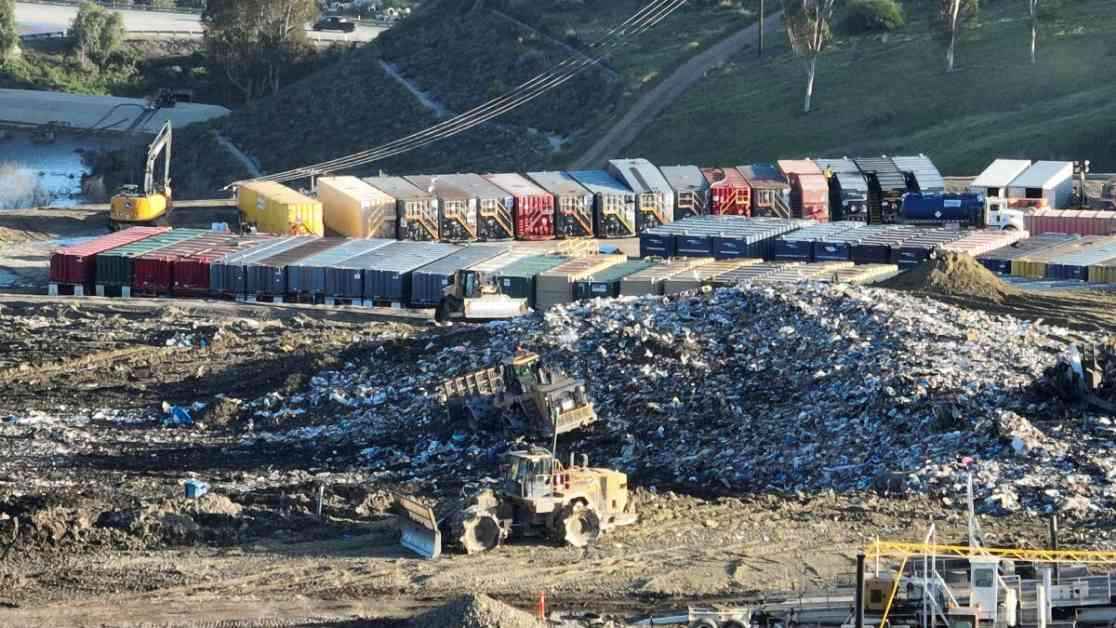A massive, smoldering chemical reaction lurking deep within the confines of the recently shuttered Chiquita Canyon Landfill in Castaic has ignited a blaze of concern and urgency. State officials have sounded the alarm, warning of the impending peril poised to engulf 160 acres of buried waste, complete with a looming threat to a storage site for hazardous liquid waste.
The California Environmental Protection Agency and the state Department of Toxic Substances Control have declared a state of emergency, citing an imminent and substantial danger to public health and the environment. With fines of up to $70,000 per day hanging over its head, the company that owns and operates the landfill, Waste Connections Inc., has been given an ultimatum: implement corrective measures or face the consequences.
For nearly three years, an intense chemical reaction has been smoldering beneath the surface of a 30-acre expanse within the Chiquita Canyon Landfill. The resulting inferno has not only generated noxious odors wafting into nearby neighborhoods but has also led to hazardous leachate seeping out onto the ground. While landfill representatives have maintained that the situation was contained to the initial 30-acre area, state regulators have uncovered evidence suggesting otherwise.
According to a recent state analysis and enforcement action, the fiery reaction has expanded its grip to approximately 90 acres, evidenced by abnormally high temperatures and carbon monoxide emissions in previously unaffected areas. In the absence of decisive intervention, officials anticipate the inferno to spread further, incinerating trash for another ten years or more. A chilling report from CalRecycle paints a grim picture, stating, “There is no proposed barrier to prevent the reaction from consuming the entire facility. The reaction area is expanding, and the current containment strategy has failed.”
Despite the grim outlook painted by state authorities, Waste Connections Inc. has refuted their findings. Steve Cassulo, the landfill manager, has expressed disagreement with the regulators’ allegations and conclusions, asserting that the data supports the efficacy of their mitigation efforts thus far. However, as the landscape beneath the landfill continues to crumble under the pressure of the burning debris, concerns mount over the stability of key areas, such as the tank farms housing hazardous leachate.
As parts of the landfill face rapid collapse due to the incendiary reaction, regulators fear that the tank farms may be compromised, leading to a catastrophic spill of chemical-laden leachate. The formation of deep cracks and sinkholes on the landfill’s surface near these storage containers has deepened these worries, with the potential for hazardous chemicals to seep into groundwater or contaminate nearby water sources.
The repercussions of the landfill’s crisis extend beyond the immediate vicinity, posing a threat to air quality in the surrounding area. The scalding leachate that spills onto the surface releases toxic chemicals, including cancer-causing benzene, into the atmosphere. Residents have reported a slew of health issues, from headaches to nosebleeds and respiratory difficulties, prompting an influx of complaints to the South Coast Air Quality Management District.
State Assemblymember Pilar Schiavo has been a vocal advocate for the affected communities of Val Verde and Castaic, calling attention to the dire health risks posed by the ongoing environmental disaster. Despite her efforts to push for a state of emergency declaration, the Newsom administration has held back, deeming it unhelpful in the current response efforts. The situation, as described by Schiavo, is nothing short of a nightmare, with no clear-cut solution in sight.
In the face of mounting pressures and escalating risks, state regulators have issued a series of mandates to Waste Connections Inc. to contain the inferno and mitigate its impacts. From relocating the tank farm to installing barriers and expanding synthetic covers, the directives aim to avert a full-blown catastrophe. Director Katie Butler of the Department of Toxic Substances Control has underscored the urgency of the situation, emphasizing the need for tangible actions to quell the crisis and alleviate the burdens borne by the affected communities.
As the fate of the Chiquita Canyon Landfill hangs in the balance, the battle against the raging chemical reaction rages on, with stakeholders and regulators alike grappling to find a resolution that safeguards public health and the environment. The stakes are high, and the clock is ticking, as the unfolding drama unfolds in the heart of Castaic.














